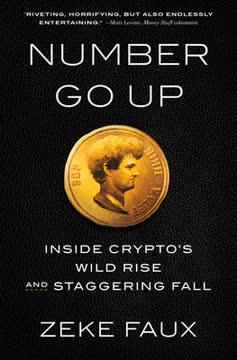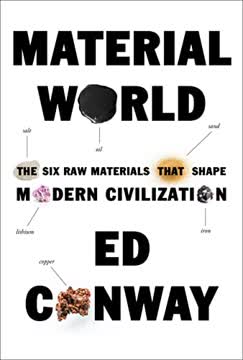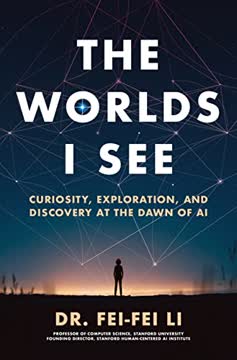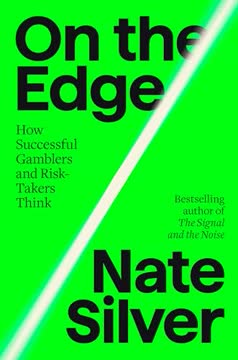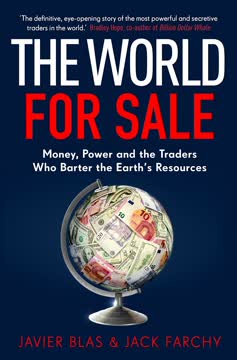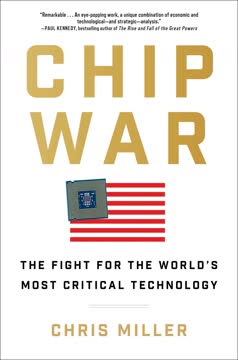重点摘要
1. 半导体产业塑造全球权力动态
“芯片塑造了全球化的地理格局,将亚洲与美国紧密联系在一起,这种关系如今已难以解开。”
地缘政治影响。 半导体产业已成为塑造全球权力动态的关键因素。其影响超越了单纯的经济考量,涉及国家安全、技术进步和国际关系。
经济影响。 该产业的全球价值链涉及数万亿美元的贸易,芯片是从智能手机到先进武器系统等一切产品的核心组件。主导半导体产业各个环节的国家拥有显著的经济和技术实力。
战略重要性。 对半导体技术和制造的控制已成为国家的关键战略资产。这影响着军事能力、经济竞争力和技术独立性。该产业在特定地区,尤其是东亚的集中,造成了新的地缘政治紧张局势和依赖关系。
2. 从真空管到集成电路:硅谷的诞生
“集成电路的发明不仅改变了电子产品,也改变了创新的地理格局。”
技术革命。 从真空管到集成电路的转变标志着技术历史上的一个重要时刻。这一转变使电子产品的小型化成为可能,为数字革命铺平了道路。
硅谷的崛起。 集成电路的发展催生了硅谷,成为全球技术创新的中心。威廉·肖克利、罗伯特·诺伊斯和戈登·摩尔等关键人物在这一转变中发挥了重要作用。
- 肖克利半导体实验室:成立于1956年,吸引了顶尖人才
- 公平儿童半导体:由“背叛的八人”于1957年创立
- 英特尔:由诺伊斯和摩尔于1968年创立,成为半导体巨头
创新生态系统。 硅谷独特的学术机构、风险投资和创业精神的结合,创造了一个无与伦比的技术创新生态系统,为数十年的半导体进步奠定了基础。
3. 冷战推动半导体创新与全球供应链
“美国的战略是让日本成为‘电子销售员’,而不是竞争对手。”
军事应用。 冷战促使对半导体技术进行大规模投资,美国和苏联都意识到其潜在的军事应用。这种竞争推动了芯片设计和制造的快速进步。
全球供应链。 为了保持技术优势,美国鼓励盟国,特别是东亚国家发展半导体产业。这一战略导致了复杂的全球供应链的形成,并持续至今。
- 日本:被鼓励发展消费电子产品
- 韩国:支持发展内存芯片生产
- 台湾:被培育为关键制造中心
意外后果。 尽管这一战略成功遏制了苏联的技术进步,但也为未来美国半导体主导地位的挑战奠定了基础,因为盟国发展了自己的强大产业。
4. 日本半导体产业的崛起与衰落
“日本的芯片公司不仅与硅谷竞争;它们还在压制硅谷。”
快速崛起。 日本的半导体产业在1980年代经历了迅猛发展,主导了全球内存芯片的生产。这一成功建立在政府支持、高效的制造流程和对质量的关注之上。
市场主导地位。 到1980年代末,日本公司如NEC、东芝和日立控制了全球半导体市场的相当一部分,尤其是在动态随机存取内存(DRAM)芯片领域。
最终衰退。 然而,日本的主导地位相对短暂。多个因素导致了其衰退:
- 对DRAM生产的过度投资
- 未能适应向微处理器的转变
- 韩国和台湾竞争对手的崛起
- 美国的贸易压力和半导体贸易协议
5. 台湾成为芯片制造的重要参与者
“台湾半导体制造公司(TSMC)已成为世界上最重要但大多数人未曾听闻的公司。”
铸造模式创新。 TSMC由张忠谋于1987年创立,开创了“纯代工”模式,专注于制造其他公司设计的芯片。这一模式彻底改变了半导体产业。
全球主导地位。 TSMC已成为全球领先的半导体制造商,尤其是在先进芯片领域。其技术实力和规模使其成为全球科技生态系统中不可或缺的一部分。
地缘政治影响。 台湾在芯片制造中的核心角色具有重要的地缘政治意义:
- 为潜在的中国侵略提供“硅盾”
- 引发对供应链脆弱性的担忧
- 成为美中技术竞争的焦点
6. 中国推动半导体独立威胁美国主导地位
“习近平呼吁中国‘尽快在核心技术上实现突破’。”
战略优先。 中国已将半导体独立视为国家的关键优先事项,认为对外国芯片的依赖是一种战略脆弱性。这一推动是中国成为全球技术领导者更广泛努力的一部分。
巨额投资。 中国政府已承诺数千亿美元发展国内半导体产业。这包括:
- 建立国家投资基金
- 向芯片公司提供补贴
- 鼓励外国技术转让
全球影响。 中国的半导体雄心具有深远的后果:
- 加剧与美国的技术竞争
- 干扰现有的全球供应链
- 引发对先进芯片潜在军事应用的担忧
7. 战争的未来:人工智能与先进芯片成为新的战场
“在人工智能领域领先的国家将主宰世界。”
人工智能驱动的战争。 先进的半导体对开发和部署军事应用中的人工智能系统至关重要。这包括自主武器、先进的目标系统和实时战场分析。
计算能力竞赛。 快速处理大量数据的能力正成为军事优势的关键决定因素。这导致了对专门为人工智能应用设计的更强大和高效芯片的竞赛。
双重用途技术。 许多先进的半导体具有民用和军事应用,模糊了商业和国防技术之间的界限。这使得控制敏感技术传播的努力变得复杂,并带来了新的出口管制挑战。
8. 美国政策转变:从“跑得更快”到技术遏制
“过去的‘跑得更快’的做法已不够。我们还需要减缓他们的步伐。”
政策演变。 美国的半导体政策已从主要关注通过创新保持技术领先,转向积极遏制中国的技术进步。
出口管制。 美国已实施越来越严格的出口管制,限制先进半导体技术,旨在限制中国获取尖端芯片和制造设备的机会。
国内投资。 鉴于半导体的战略重要性,美国政府已开始加大对国内芯片制造和研究的投资:
- CHIPS法案:为美国芯片生产提供数十亿美元的补贴
- 国家半导体技术中心:旨在加速芯片创新
9. 全球芯片短缺暴露供应链脆弱性
“芯片短缺揭示了半导体供应链的脆弱性和地理集中性。”
供应链中断。 2020-2021年的全球芯片短缺突显了半导体供应链的脆弱性,影响了从汽车到消费电子等多个行业。
集中风险。 短缺暴露了芯片生产集中在少数地理区域,尤其是台湾和韩国的风险。这引发了对制造地点多样化的呼声。
政策响应。 全球各国政府和公司对短缺作出了回应:
- 增加对国内芯片生产的投资
- 寻求多样化供应链
- 重新评估库存和采购策略
最后更新日期:
FAQ
1. What is "Chip War: The Fight for the World's Most Critical Technology" by Chris Miller about?
- History of Semiconductors: The book traces the invention, development, and global spread of semiconductor technology, focusing on how chips became the foundation of modern life, economies, and military power.
- Geopolitical Competition: It explores the intense international competition—especially between the US, China, Japan, Taiwan, and the Soviet Union—to control chip design, manufacturing, and supply chains.
- Key Players and Companies: The narrative highlights the roles of major companies (like Intel, TSMC, Samsung, and ASML) and influential individuals (such as Morris Chang, Andy Grove, and Akio Morita).
- Modern Implications: The book connects historical developments to current events, showing how chip shortages, trade wars, and national security concerns shape today’s world.
2. Why should I read "Chip War" by Chris Miller?
- Understand Global Power Shifts: The book explains how control over semiconductors underpins economic and military power, making it essential for understanding 21st-century geopolitics.
- Insight into Technology’s Role: It reveals how chips are embedded in everything from smartphones to missiles, and why their production is so complex and concentrated.
- Lessons from History: By examining past successes and failures in the chip industry, readers gain perspective on current supply chain vulnerabilities and future risks.
- Engaging Storytelling: Chris Miller combines technical clarity with compelling stories of innovation, espionage, and corporate rivalry, making the book accessible and gripping.
3. What are the key takeaways from "Chip War" by Chris Miller?
- Semiconductors as Strategic Assets: Chips are not just commercial products—they are strategic resources that shape national security, economic growth, and technological leadership.
- Global Supply Chain Fragility: The highly specialized and geographically concentrated chip supply chain is both a marvel of efficiency and a source of vulnerability.
- Innovation and Industrial Policy: Government support, talent migration, and corporate strategy have all played crucial roles in determining which countries and companies lead in semiconductors.
- The New Cold War: The US-China rivalry over chips is a defining feature of modern geopolitics, with export controls, subsidies, and technological decoupling reshaping the industry.
4. How did the semiconductor industry originate and evolve, according to "Chip War"?
- Post-WWII Innovation: The industry began with the invention of the transistor at Bell Labs, followed by the integrated circuit, driven by military and space race needs.
- Rise of Silicon Valley: Key figures like William Shockley, Robert Noyce, and Gordon Moore established the culture and business models that made Silicon Valley the global center for chip innovation.
- Globalization of Manufacturing: As costs rose, companies moved assembly and manufacturing to Asia, especially Taiwan, South Korea, and Japan, creating today’s global supply chain.
- Government and Military Influence: US government funding and procurement, especially for defense, were critical in the early decades, while later, Asian governments used industrial policy to catch up.
5. What is the significance of Taiwan and TSMC in the global chip industry, as described in "Chip War"?
- TSMC’s Founding and Model: Morris Chang founded TSMC in Taiwan, pioneering the “foundry” model—manufacturing chips designed by other companies—which revolutionized the industry.
- Concentration of Advanced Manufacturing: TSMC now produces the vast majority of the world’s most advanced chips, making Taiwan a critical node in the global supply chain.
- Geopolitical Vulnerability: The book highlights how Taiwan’s centrality creates both economic power and strategic risk, especially given tensions with China.
- “Silicon Shield” Concept: Taiwan’s chip industry is seen as a deterrent against conflict, as its destruction would disrupt the global economy.
6. How does "Chip War" explain the US-China rivalry over semiconductors?
- China’s Ambitions: China has invested heavily in building its own chip industry, aiming for self-sufficiency and global leadership, as outlined in policies like “Made in China 2025.”
- US Export Controls: The US has responded with export restrictions on advanced chips and manufacturing equipment, targeting companies like Huawei and SMIC to slow China’s progress.
- Technology Transfer and Espionage: The book details cases of technology transfer, joint ventures, and alleged intellectual property theft as China seeks to close the gap.
- Strategic Stakes: The rivalry is about more than commerce—it’s about military power, economic independence, and the future of global technology standards.
7. What are the main technological and supply chain bottlenecks ("chokepoints") in the chip industry, according to "Chip War"?
- Extreme Concentration: Key stages—like advanced chip manufacturing (TSMC, Samsung), lithography equipment (ASML), and design software (US firms)—are dominated by a handful of companies.
- Export Controls as Leverage: The US and its allies can restrict access to critical tools and software, effectively “choking” rivals’ ability to produce leading-edge chips.
- Vulnerability to Disruption: Natural disasters, pandemics, or conflict in Taiwan could halt global chip production, affecting everything from cars to defense systems.
- Difficulty of Replication: Building new fabs or duplicating advanced equipment takes years and massive investment, making these chokepoints persistent.
8. How did Japan, South Korea, and Europe fit into the semiconductor story in "Chip War"?
- Japan’s Rise and Fall: Japan became a chip powerhouse in the 1980s through government support and manufacturing excellence, but later lost ground to the US and South Korea due to market shifts and strategic missteps.
- South Korea’s Success: Companies like Samsung and SK Hynix, with strong government backing, became global leaders in memory chips, leveraging scale and aggressive investment.
- Europe’s Niche Strengths: While Europe lost out in chip manufacturing, it remains vital in equipment (ASML) and some specialized chip markets.
- Lessons in Industrial Policy: The book contrasts different approaches to government intervention, showing both successes and failures.
9. What are the key concepts and terms explained in "Chip War" by Chris Miller?
- Moore’s Law: The observation that the number of transistors on a chip doubles roughly every two years, driving exponential growth in computing power.
- Foundry Model: A business model where companies like TSMC manufacture chips designed by others, enabling the rise of “fabless” design firms.
- Chokepoints: Critical nodes in the supply chain (e.g., advanced lithography, EDA software) where a single company or country dominates.
- Export Controls and Decoupling: Government policies to restrict technology transfer, aiming to protect national security and maintain technological advantage.
10. How does "Chip War" address the future of the semiconductor industry and potential risks?
- End of Moore’s Law?: The book discusses the slowing of Moore’s Law and the challenges of further miniaturization, requiring new materials and architectures.
- AI and Custom Chips: The rise of artificial intelligence and specialized chips (like GPUs and TPUs) is reshaping the industry and competition.
- Supply Chain Resilience: Governments and companies are investing in domestic manufacturing to reduce dependence on foreign suppliers, but this is costly and slow.
- Geopolitical Flashpoints: The risk of conflict over Taiwan, trade wars, and technological decoupling could disrupt the industry and the global economy.
11. What are some of the most important quotes from "Chip War" and what do they mean?
- “We are competing for everything.” – This quote encapsulates the book’s central thesis: the chip war is about economic, military, and technological supremacy.
- “No one wants to destroy Taiwan’s semiconductor supply chain.” – Highlights the paradox that Taiwan’s importance is both a shield and a source of risk.
- “Chips are the new oil.” – Emphasizes that semiconductors are now as strategically vital as energy resources once were.
- “Weaponized interdependence.” – Refers to how global supply chains can be used as tools of coercion or leverage in international politics.
12. What practical lessons and policy recommendations does Chris Miller offer in "Chip War"?
- Invest in R&D and Talent: Sustained innovation requires investment in research, education, and attracting global talent.
- Diversify Supply Chains: Reducing over-reliance on any single country or company is crucial for resilience.
- Balance Openness and Security: Policymakers must weigh the benefits of global collaboration against the risks of technology transfer to rivals.
- Prepare for Disruption: Governments and businesses should plan for potential shocks—whether from conflict, natural disasters, or technological shifts—to the chip supply chain.
评论
《芯片战争》因其对半导体行业的全面历史、地缘政治洞察以及通俗易懂的写作风格而备受赞誉。读者们欣赏书中对芯片技术及其全球影响的详细解释。然而,也有一些人批评其亲美的立场和内容的重复性。许多人认为,这本书让人对全球科技供应链的脆弱性以及台湾的战略重要性有了新的认识。该书因其与当前地缘政治紧张局势的相关性,以及对技术、经济与政治之间复杂关系的探讨而受到高度评价。
Similar Books

